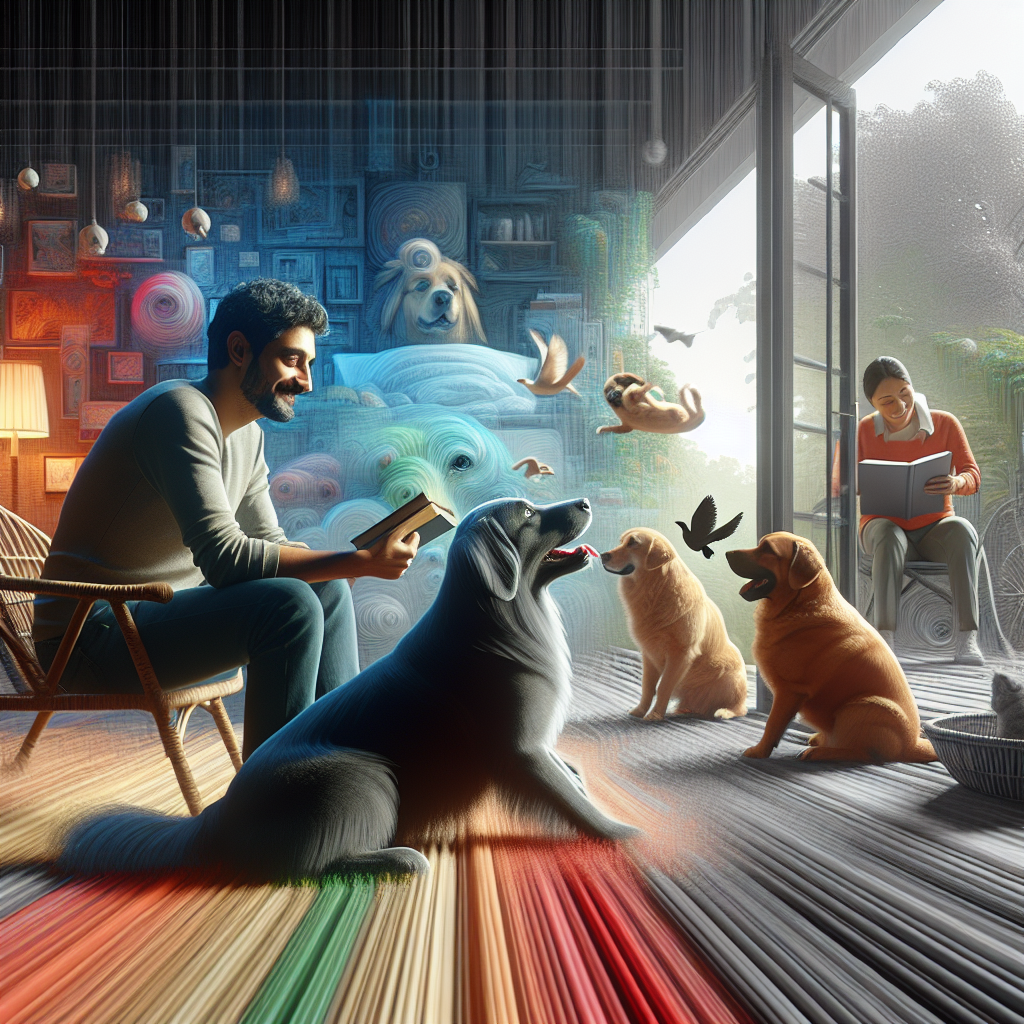===INTRO:===
Have you ever wondered what your dog sees when they look at you? "Unveiling Canine Eyes: How Dogs Perceive Their Humans" delves into the intricate world of canine vision and emotional perception. Many dog owners experience a profound connection with their pets, yet the complexities of this bond often remain shrouded in mystery. Understanding how dogs perceive their humans through the lens of their unique vision offers deeper insights into their behavior and emotional responses. As we explore this fascinating subject, you’ll discover how to enhance your relationship with your furry companion.
Understanding Canine Vision: A Window to Their World
When we consider the visual capabilities of dogs, we must first understand that their world is fundamentally different from ours. While humans possess trichromatic vision, allowing for a rich spectrum of color, dogs are dichromatic, meaning they primarily see two colors: blue and yellow. This limitation means that certain hues, particularly reds and greens, appear muted or grayish to dogs. As a result, your vibrant red sweater may be interpreted as a dull shade, emphasizing how important it is for dog owners to consider color when choosing toys and accessories for their pets.
Beyond color perception, dogs have unique adaptations that enable them to excel in low-light conditions. The tapetum lucidum, a layer of tissue behind the retina, acts as a mirror, reflecting light back through the retina. This adaptation enhances their night vision, allowing them to see effectively in dim settings. Consequently, this biological feature gives dogs an advantage when exploring environments during twilight hours or in darkened spaces. With these insights, understanding your dog’s visual capabilities can lead to better interactions and a more enriching experience for both you and your canine companion.
Moreover, dogs’ eyes are structured to perceive movement more acutely than humans can. This heightened sensitivity to motion allows them to track fast-moving objects and detect subtle shifts in their environment. While this instinctual ability serves them well in the wild, it also enhances their capability to read human body language and behaviors. Understanding these aspects of canine vision provides pet owners with the knowledge needed to create an engaging and safe environment for their furry friends.
How Dogs Read Human Emotions Through Their Eyes
The emotional bond between dogs and humans is evident in the way our pets respond to our facial expressions and body language. Dogs have evolved alongside humans for thousands of years, resulting in a remarkable ability to interpret human emotions. Recent studies show that dogs can identify human facial expressions, differentiating between happy, sad, and angry faces. This capacity allows dogs to respond appropriately to their owners’ moods and emotions, reinforcing the bond they share.
Interestingly, the connection between dogs and humans goes beyond mere observation. When a dog locks eyes with a human, it triggers a release of oxytocin, often referred to as the "love hormone." This same hormone is released in humans during bonding moments, such as gazing into a loved one’s eyes. As a result, when a dog gazes at you, it’s not merely an act of curiosity; it’s a profound form of communication and emotional connection. Understanding this dynamic can deepen your relationship, encouraging more eye contact and shared moments to foster a stronger bond.
Moreover, the positioning of a dog’s eyes contributes significantly to their emotional expression. Dogs utilize the shape and positioning of their eyes, along with their body language, to convey feelings such as fear, excitement, or contentment. For instance, a soft gaze combined with relaxed ears may indicate a dog is comfortable and happy, while a hard stare might signal discomfort or anxiety. By observing these subtle cues, dog owners can better understand their pets’ emotional states, leading to a more harmonious relationship built on mutual understanding and trust.
===OUTRO:===
In conclusion, "Unveiling Canine Eyes: How Dogs Perceive Their Humans" sheds light on the fascinating ways dogs interpret their world and the emotions of their beloved owners. Through a deeper understanding of canine vision and emotional perception, we can enhance the bond we share with our furry companions. By recognizing how dogs perceive their surroundings and read our emotions, we can create a more enriching environment that caters to both their needs and our desires for companionship. So the next time your dog gazes intently into your eyes, remember that it’s not just a look—it’s a bridge to a deeper connection waiting to be explored. Engage with your dog, observe their reactions, and cherish the unique relationship that flourishes through understanding.
Measuring Your Dog’s Height: A Comprehensive GuideUnderstanding How Dogs Become Infested with FleasUnderstanding the Lifespan of Pug Dogs: What to ExpectRelevant LinkRelevant LinkRelevant Link
